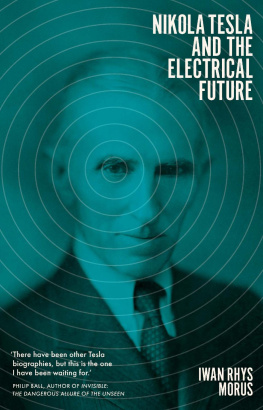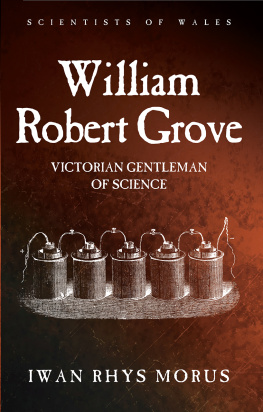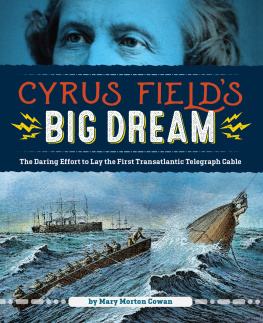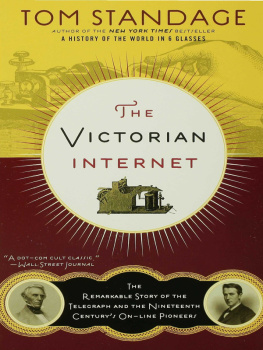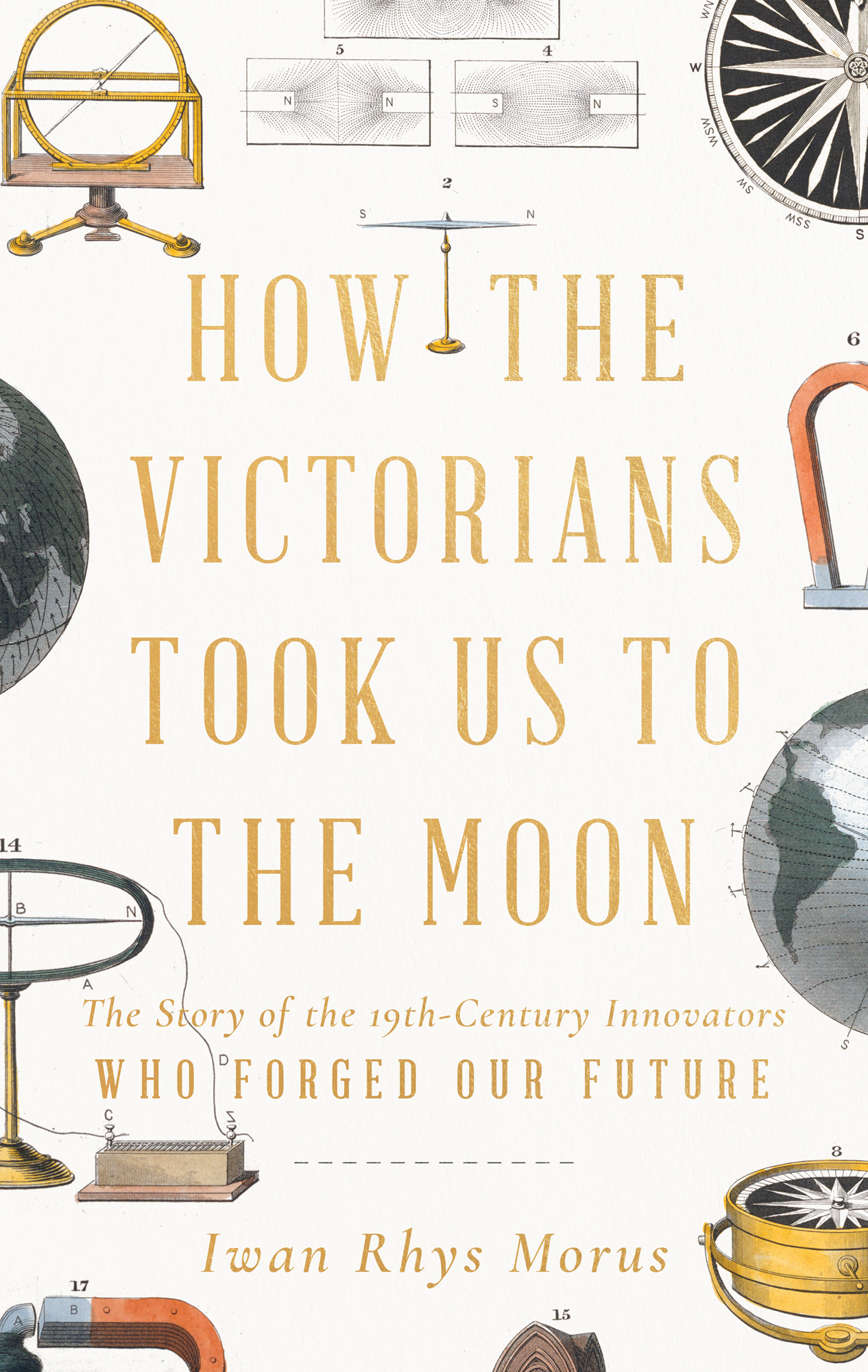Contents
Guide
How the Victorians Took Us to the Moon
The Story of the 19th-Century Innovators
Who Forged Our Future
Iwan Rhys Morus
ABOUT THE AUTHOR

Iwan Rhys Morus is professor of history at Aberystwyth University. He has published widely on the history of science, with titles including Michael Faraday and the Electrical Century (Icon, 2017), Nikola Tesla and the Electrical Future (Icon, 2019) and the Oxford Illustrated History of Science. He lives in Aberystwyth, Wales.

Acknowledgements
I have been thinking about the Victorians and their science for a very long time for most of my career as a historian of science, in fact. Im fascinated by Victorian culture because in so many ways its still very close to us, but also often irreducibly alien. The origins of many of the ways we think and do things now lie in their century, even if we manifest them in some very different ways. This book is so long in the making, and Ive had so many conversations along the way, that I cannot possibly thank everyone who has contributed to it in some way, but there are some I want to thank in particular. Conversations with Will Ashworth, Peter Bowler, Sarah Dry, Patricia Fara, Rob Iliffe, Bernie Lightman, Richard Noakes, Sam Robinson, Anne and Jim Secord, Charlotte Sleigh, Andrew Warwick and, of course, Simon Schaffer, at various times and in various places, have helped me enormously over the years as I tried to put my thoughts about the Victorian future into a more coherent framework. Id like to thank Marina Benjamin for encouraging me to start the process of developing some of these ideas in aeon.co. Thanks also to my agent, Peter Tallack, for his enthusiasm and patience. Im grateful to Andrew Furlow, Duncan Heath and James Lilford at Icon Books, for everything, and to Jo Walker for the fantastic cover design; and to Claiborne Hancock and Nicole Maher at Pegasus, as well as Faceout Studio for the American cover.
Finally, my wife and best critic Amanda Rees has been, as always, wonderful. This is for you, Mandy.
Prologue Inventing the Future
Not that long ago, in a galaxy not really all that far away
I t was 16 July 1909. There was a thunderous roar as His Majestys spaceship Victorious rose imperiously into the blazing blue sky, a stately column of silver and gold balanced precariously on a tongue of fire. His Majesty himself, Edward VII, had travelled all the way to Indias Deccan Plateau to see this latest triumph of scientific and technological ingenuity. Accompanying him were the prime minister, Herbert Asquith, the Royal Societys president, Sir Archibald Geikie, and the Royal Astronomical Societys newly elected president, David Gill, as well as the First Sea Lord, Admiral of the Fleet, Sir John Fisher. The prestigious gathering of notables only served to underline just how epoch-making the momentous occasion really was. It was the prelude to a pioneering journey of exploration unparalleled in history. Authors of scientific romances, such as the Frenchman Jules Verne or even H.G. Wells, had merely speculated about putting men on the Moon. Now, thanks to the combined expertise of the Empires engineers and men of science, it was really happening. This was no flight of fancy it was taking place before their very eyes. In the tiny landing lighter Deliverance, perched on top of the huge rocket, three of His Majestys most experienced naval officers were ready to take the Empire into space and claim the Moon for Britain.
The triumphant flight of HMS Victorious was the culmination of more than twenty years determined effort by the leading men of science and engineering to conquer space and show to the world the superior reach and power of British technological ingenuity. The idea had first been mooted at the annual meeting of the British Association for the Advancement of Science in Bath during the summer of 1888. The societys president that year had been the eminent engineer Sir Frederick Bramwell, and during the public dinner that concluded the meeting, he had started speculating about just how far into space projectiles might be fired. He was interested in big guns, after all, and had delivered an address on the topic to the Birmingham and Midlands Institute just two years earlier. While it soon became clear that no gun, however big, would be sufficient, someone suggested that something along the lines of a rocket of some kind might do the job. Gradually, the enterprise took shape. Lord Salisbury, the Tory prime minister at the time of the meeting in 1888, was a scientific man and was easily persuaded that sending men to the Moon would not only be a scientific triumph, but that it was absolutely essential for the good of the Empire that Britain should get there first. Imperial and industrial rivals might not yet have the resources to accomplish such a stupendous task, but they would one day. It was imperative that Britain should lay claim to the Moon and its resources before it fell into potentially hostile hands.
As the enterprise took shape, committees were formed to deliberate over the immense task ahead. Naval architects from the Royal Institution of Naval Architects, more used to designing dreadnoughts than rockets, debated competing plans for a space travelling vehicle. The British Association for the Advancement of Science (BAAS) and the Royal Society bickered over which institution should take the lead although that issue was resolved with the establishment of the National Physical Laboratory in 1900. In 1879, the BAAS had deliberated whether it was economically feasible to construct the Analytical Engine that Charles Babbage had designed, but never built, in the 1840s. They had thought the cost prohibitive then, but now the machine was essential, and engineers struggled with the task of not only getting it made but made much smaller and able to work by electricity, not steam. Chemists experimented to find the most efficient fuel and electricians worked on the complex circuitry that would allow the crew to control the colossal space-flying machine. Resources from all over the Empire and beyond were poured into the attempt the costs involved were astronomical. The three naval officers who would risk it all for the Empire were carefully selected and rigorously prepared only the most self-disciplined men would be fit for the great adventure.
Four days after its successful launch into space on the tip of the Victorious, the Deliverance landed safely on the Moons surface and for the first time in history, human feet stepped onto an alien world. The landing ground had been carefully selected an apparently unobstructed area in the Sea of Tranquillity. When the three men stepped out of the Deliverance and stood on the Moons surface, they were prepared for anything. They were armed, of course. There was a distinct possibility that this apparently lifeless surface might still contain life the remnants, maybe, of some former civilisation that had degenerated and collapsed as the lunar atmosphere seeped away into space. If some degenerate life remained, then it might well be hostile. The selenauts came prepared to prospect for potential resources as well. Was there water, hidden in some crevices somewhere, for example? A supply of water would be essential if Britain were ever to establish a permanent station on the Moon to exploit what mineral resources might be there. But in many ways, the missions main objective had already been achieved. The Union Flag now flew proudly over the Sea of Tranquillity, proclaiming to the world that the Moon belonged to Britain.


